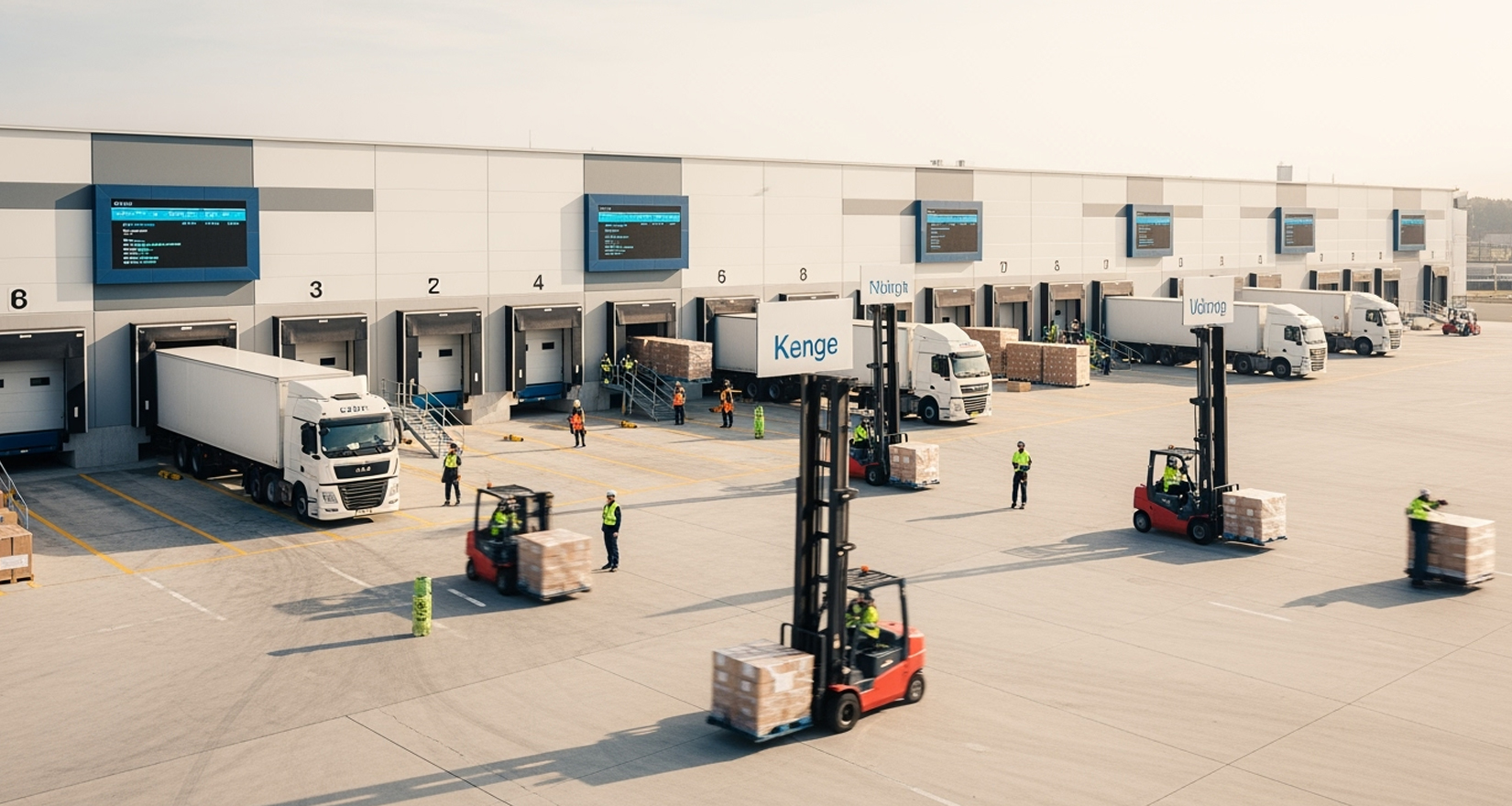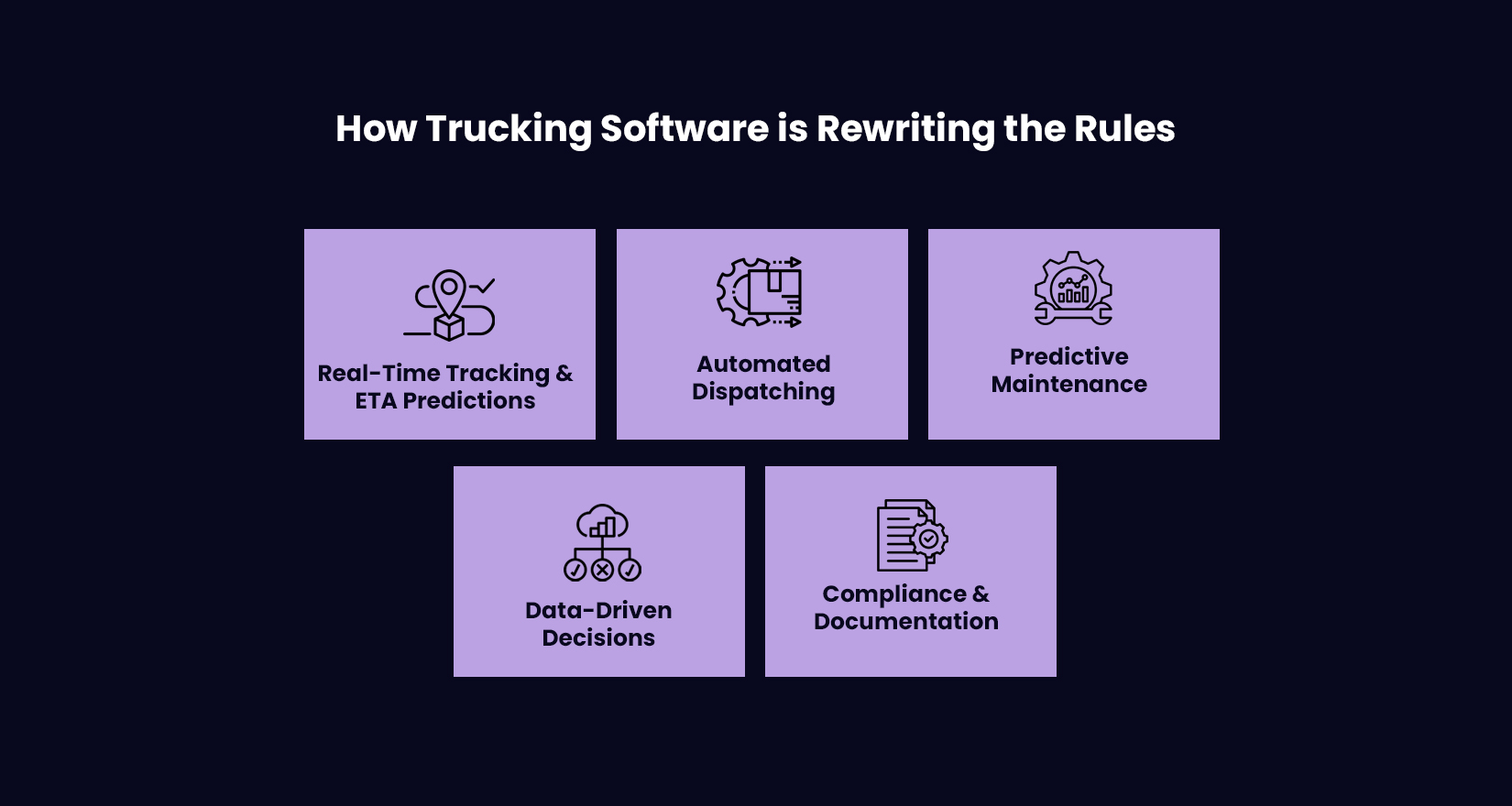
How Trucking Software Can Rescue America’s Struggling Industry
Transporting over 11 billion tons of cargo annually and managing nearly 75% of the country’s merchandise by mass, the American trucking sector forms the crucial foundation of the economy. Nonetheless, at the heart of this essential industry, a growing predicament persists. Insufficient labor, increased expenditures, unpredictable demand, and evolving trade regulations have plunged trucking firms into an extended downturn—which some describe as a “freight recession.” While financial adversities continue to assault the industry, a benefit is emerging: technology. Crucially, the advent of specialized trucking software is presenting carriers with a path to navigate these challenging times.
A Perfect Storm: Labor, Demand, and the Freight Recession

As per Tech.co, almost 69% of freight companies report difficulties in satisfying demand because of a lack of drivers or challenges with keeping the ones they have. This was once a symbol of upward mobility–providing liberty, fair wages, and autonomy. But it has transformed into a high-churn occupation suffering from widespread burnout and unchanging pay.
Specialists debate whether the core problem is a genuine shortage or simply inadequate retention. But the outcome remains unchanged: fleets are unable to efficiently meet the needs of shippers. As James Peoples Jr., a professor of economics at the University of Wisconsin–Milwaukee, observes, swift labor turnover “generates the identical problem as a shortage—businesses cannot function at their maximum capability.”
Adding to this complexity is a drop-off in demand. Following the surge after COVID-19, the trucking sector saw a massive influx of new drivers entering the field. However, once freight volumes decreased in 2022, the earlier boom quickly transitioned into a downturn. Avery Vise, VP of Trucking at FTR Transport Intelligence, refers to this as a “sustained decline… a consequence of the robust freight market experienced from 2020–2022.”
For numerous carriers, staying viable now hinges on maximizing output with limited resource. This is precisely where contemporary dispatch software for trucking plays a vital role.
Trade Policy: The Tariff Trap on Wheels
The Department of Transportation tracks an ongoing decline in freight volumes dating back to the start of 2022. Due to rising tariffs boosting the costs of manufacturing heavy-duty trucks and essential commodities such as steel and aluminum, the financial pressure on transport fleets has intensified.
Although certain policymakers contend that these tariffs safeguard local producers, the actual influence is a mixed bag. Elevated manufacturing costs directly translate into greater expenses for purchasing and upkeep for carriers, further narrowing their profit margins.
This economic balancing act necessitates peak operational efficiency—and superior trucking software is instrumental in securing just that. By streamlining dispatching, monitoring, route determination, and maintenance timelines, trucking enterprises are able to minimize unproductive downtime. Along with this they are able to decrease fuel expenditure, and enhance overall asset utilization, even when financial returns are extremely slight.
Automation and AI: Threat or Opportunity?

A United States Senate document published in October estimated that close to 50% of the nation’s truck operators might be supplanted by automatic systems within the next ten years. While this sounds concerning, it simultaneously marks a significant chance for digital evolution.
AI-driven trucking dispatch platforms do not substitute human drivers—rather, they strengthen them. Instantaneous data, forecasting analysis, and smart route planning mitigate strain, eradicate clerical mistakes, and guarantee shipments are delivered on time. Instead of struggling with documentation or ineffective communication, drivers are able to concentrate on their core task: transporting American freight safely and productively.
Sector specialists such as James Peoples Jr. remain positive. “My hopeful view is rooted in technologies that boost efficiency, like logistics and trucking applications,” he commented. This sort of technology is not merely focused on automation; it is fundamentally about enhancing durability and stability.
How Trucking Software is Rewriting the Rules

Modern trucking software has evolved far beyond simple route mapping. Platforms like LogiNext’s trucking dispatch software is altering how fleets function via automation, improved visibility, and smart insights.
Here’s how:
1. Real-Time Tracking and ETA Predictions:
LogiNext’s solution offers real-time awareness of each vehicle’s location. Thereby, guaranteeing precise estimated times of arrival (ETAs) and facilitating clearer customer interaction.
2. Automated Dispatching:
The dispatch component refines load distribution, intelligently assigns tasks, and reduces unproductive travel distance. This automated system lowers the burden on dispatchers and ensures superior on-time delivery rates.
3. Predictive Maintenance:
AI-backed data highlights maintenance requirements before failures happen, thereby diminishing downtime and increasing the usable life of assets.
4. Data-Driven Decisions:
Through analytical dashboards and key performance indicators, fleet management gains practical insights crucial for managing expenses and boosting efficiency.
5, Compliance & Documentation:
Digital records guarantee conformity with ELD (Electronic Logging Device), FMCSA (Federal Motor Carrier Safety Administration), and various federal mandates—aiding fleets in preventing expensive penalties.
Why Carriers Are Turning to LogiNext
In a field permeated by unpredictability (or doubt), LogiNext’s dispatch management solution for haulage distinguishes itself for a singular cause (or motive). It transforms operational disarray (or disorder) into measured oversight (or mastery).
By consolidating (or integrating) driver supervision, shipment monitoring, and journey streamlining onto a unified (or single) cloud-delivered platform, LogiNext permits fleets to decrease expenditure (or running costs) by as much as 20% and enhance timely deliveries (or punctuality) by 30%, based on proprietary evaluations (or in-house research).
For modest and moderately sized transporters grappling with financial strains (or expenditure difficulties), this functionality (or capability) may represent the critical margin (or decisive factor) between surviving (or remaining active) and ceasing operations (or closure). For substantial organizations (or large corporations), it signifies expanding effectively (or scaling competently) and maintaining an edge (or staying ahead)—even amidst fiscal slumps (or economic contraction).
The Road Ahead: Tech-Led Revival
The U.S. trucking sector may be battered, but it is certainly not defeated. As the market restructures itself following the economic downturn, success will belong to companies that adopt technology both early and strategically.
From resolving acute driver shortages to navigating disruptions in global trade, superior trucking software provides an adaptive, data-centric bedrock for both recovery and expansion. Automation will not eliminate trucking—it will fundamentally reshape it. Moreover, with systems like LogiNext’s specialized trucking dispatch software, the industry doesn’t just manage to survive—it advances. After all, in the world of logistics, just like on the highway, the path ahead demands greater intelligence.
Conclusion
Trucking stands as—and will continue to be—the fundamental engine of the American economy. Although the industry faces ongoing challenges such as labor deficits, escalating expenses, and unpredictable demand, the future offers significant opportunity for those operations that adopt smart trucking software to enhance efficiency and reinforce resilience.
LogiNext is fueling this necessary transformation through data-informed automation and meticulously developed trucking dispatch software. Is your fleet ready to secure its future? Click on the red button to book a demo and know more.
58







@LogiNext